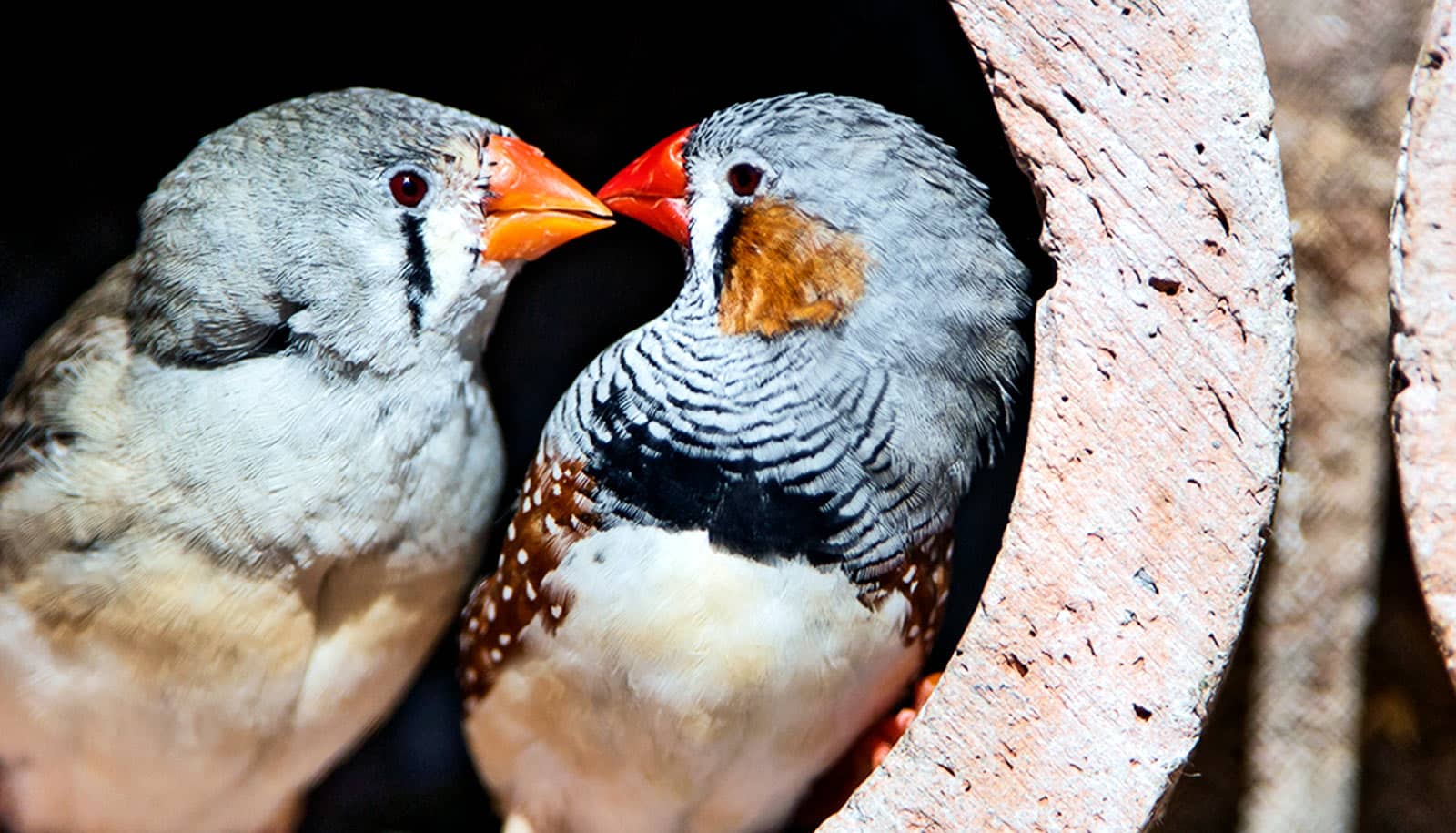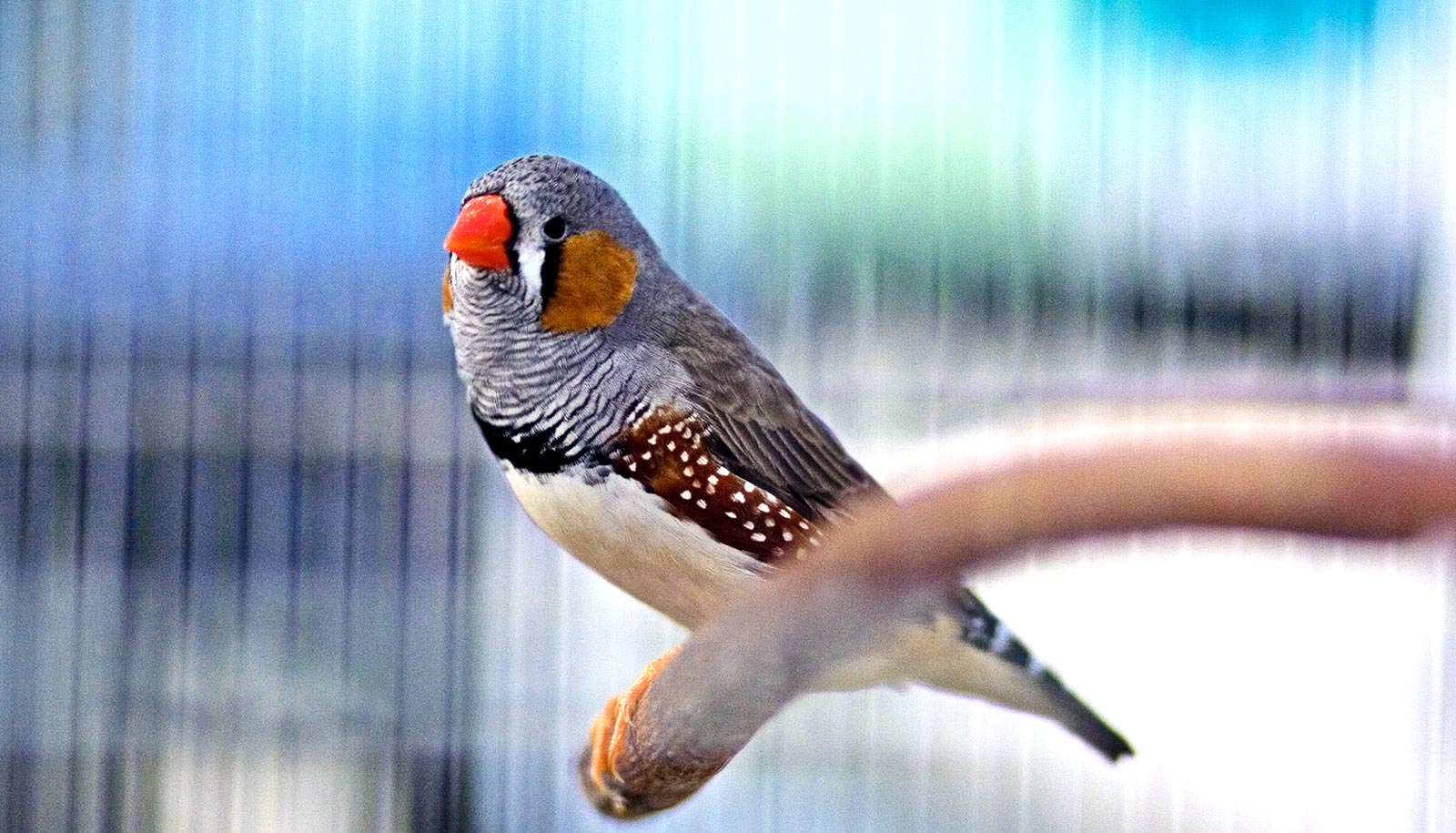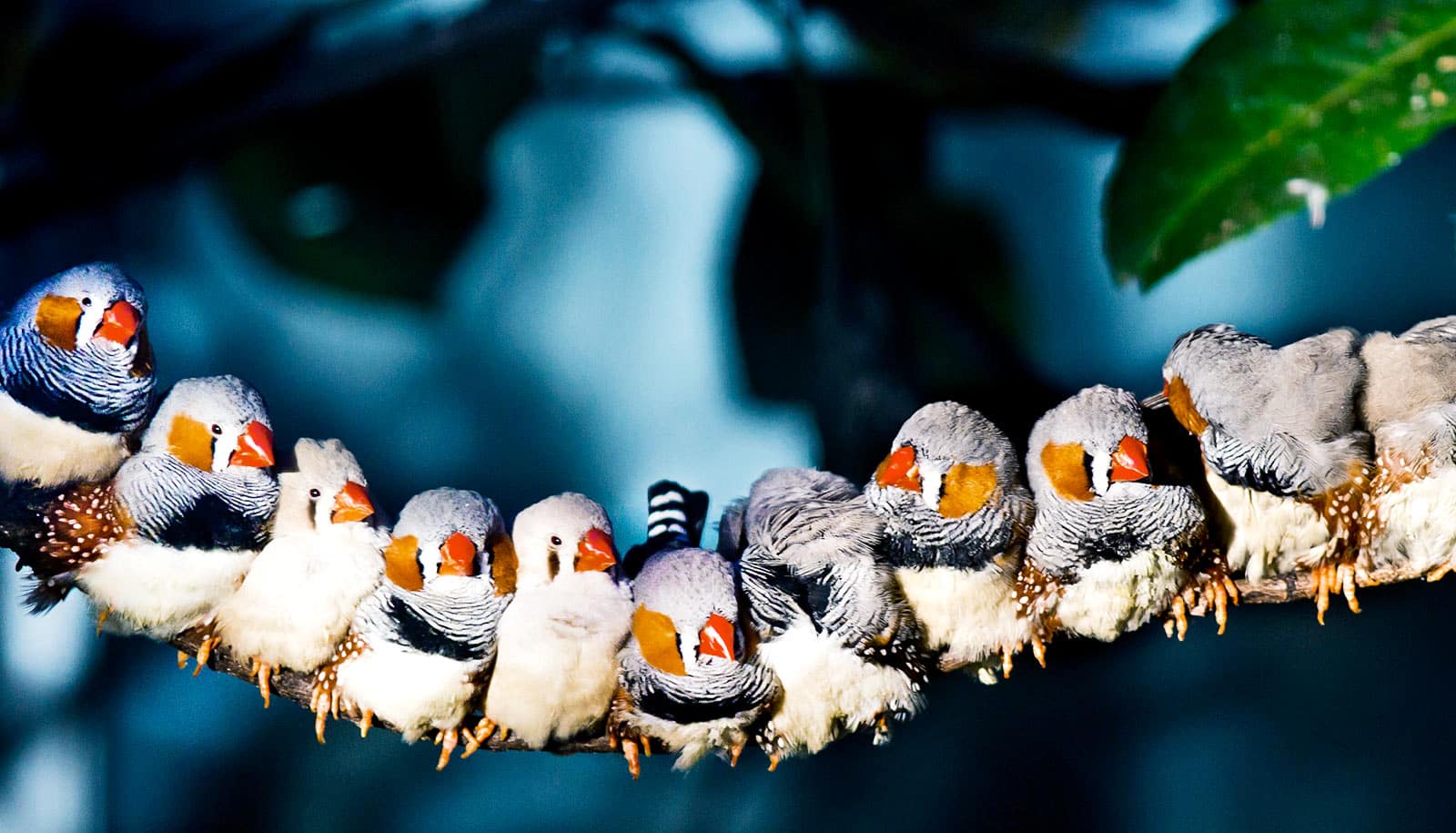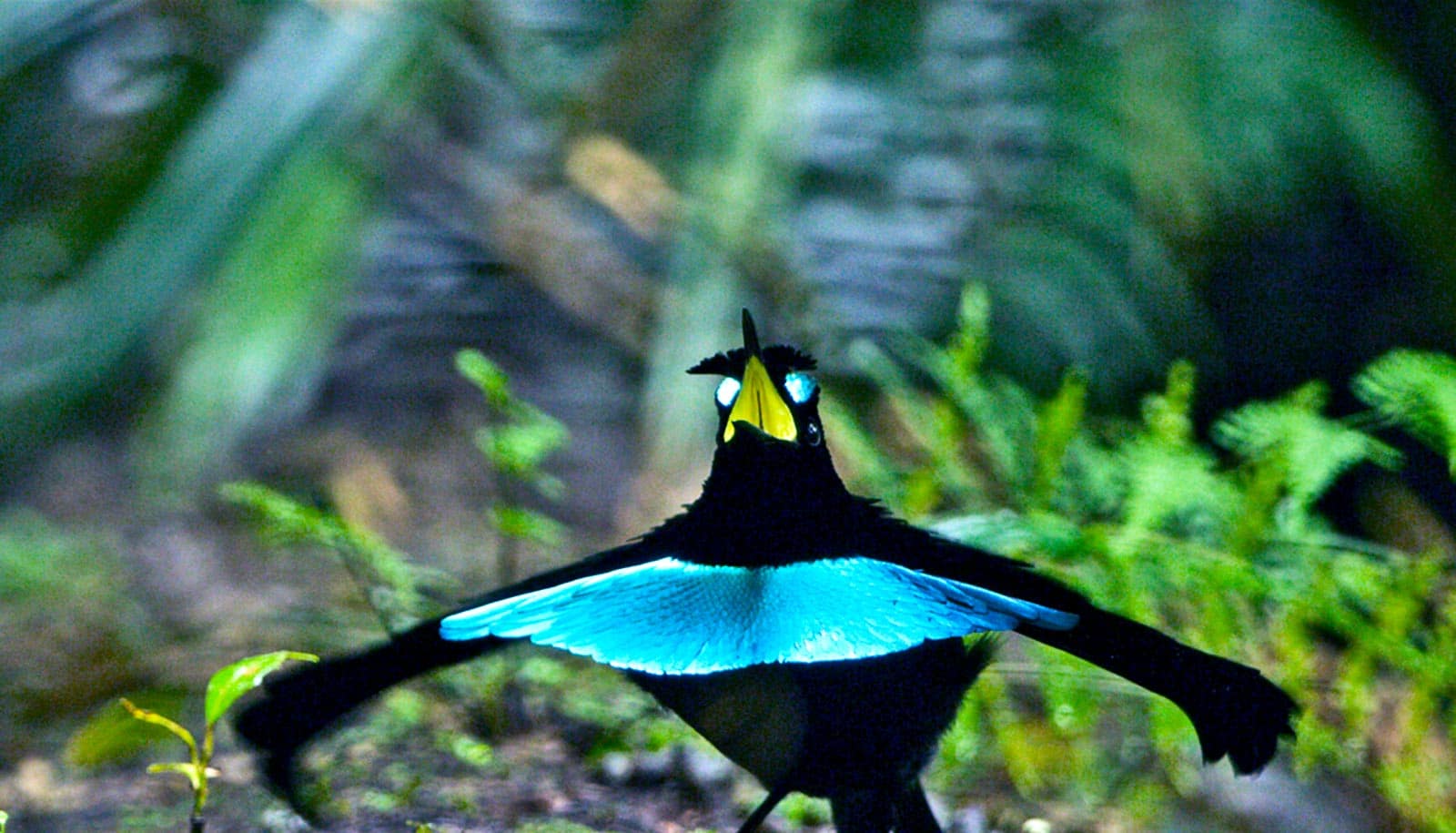A new algorithm reveals birdsong features that may be key for courtship.
As reported in PLOS Computational Biology, researchers looked at how male zebra finches adapt their vocal signals for specific audiences.
Though they may sing the same sequence of syllables during courtship interactions with females as when singing alone, they do so with subtle modifications. Humans can’t detect these differences, however, and it was unclear whether female zebra finches could either.
The researchers first conducted behavioral experiments demonstrating that female zebra finches are indeed highly adept at discriminating between short segments of males’ songs recorded in courtship versus non-courtship settings.
Subsequently, they sought to expand on earlier studies that have focused on just a few specific song features that may underlie the distinction between courtship and non-courtship song.
Taking a “bottom-up” approach, the researchers extracted over 5,000 song features from recordings and trained an algorithm to use those features to distinguish between courtship and non-courtship song phrases.
“As vocal communicators ourselves, we have a tendency to focus on aspects of communication signals that are salient to us,” says study coauthor Sarah Woolley, associate professor in the biology department at McGill University. “Using our bottom-up approach, we identified features that might never have been on our radar.”
The trained algorithm uncovered features that may be key for song perception, some of which had not been identified previously. It also made predictions about the distinction capabilities of female zebra finches that aligned well with the results of the behavioral experiments.
The findings highlight the potential for bottom-up approaches to reveal acoustic features important for communication and social discrimination.
The researchers next plan to test whether manipulating the acoustic features they discovered alters what female finches think about those songs. They also hope to evaluate how well their findings might generalize to courtship and non-courtship songs in other species.
Additional coauthors are from the University of California, San Francisco. The National Science and Engineering Council of Canada, the Fonds de recherche Nature et Technologies, and the Canadian Foundation for Innovation Canadian Foundation for Innovation funded the work.
Source: McGill University



